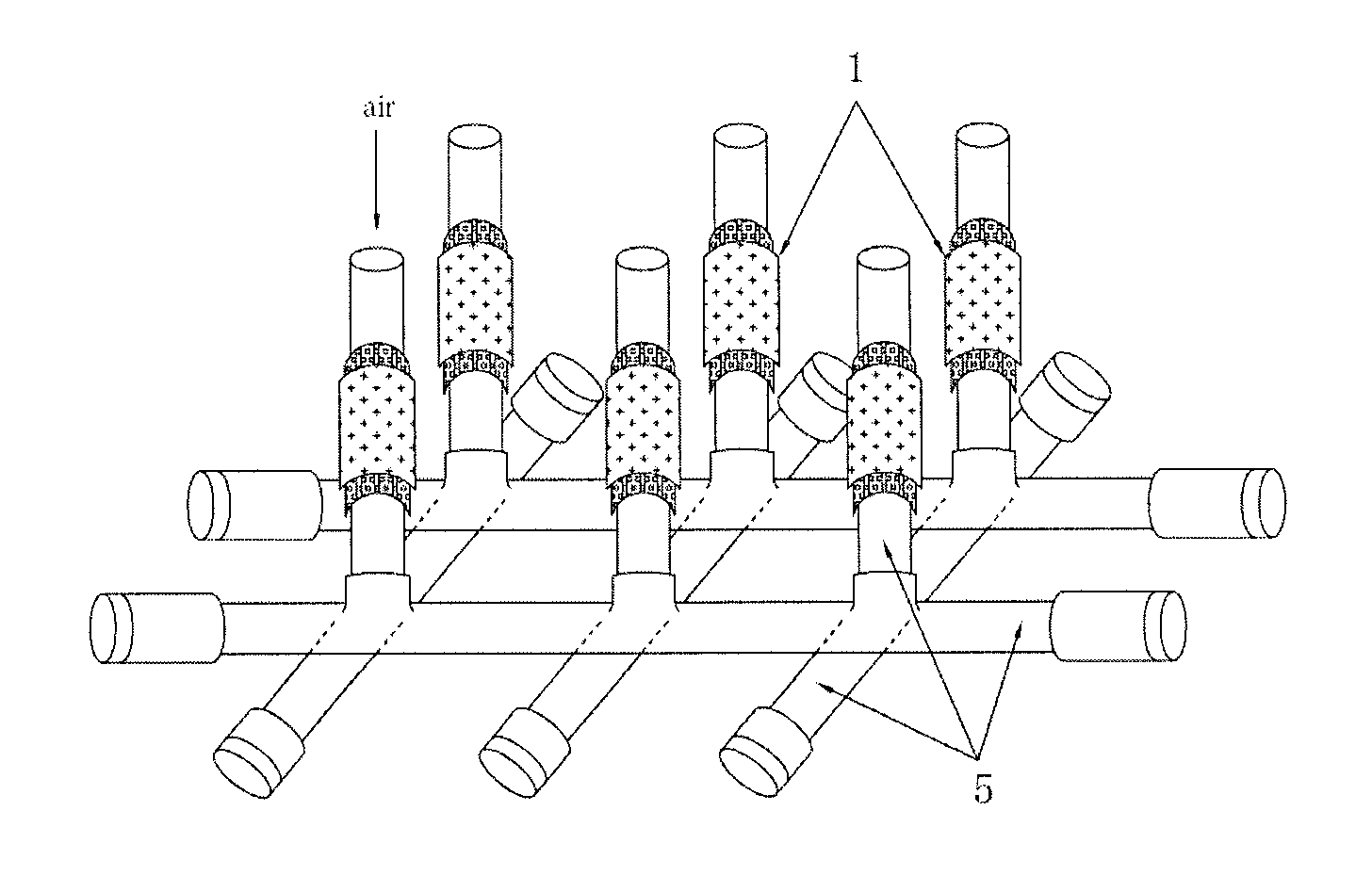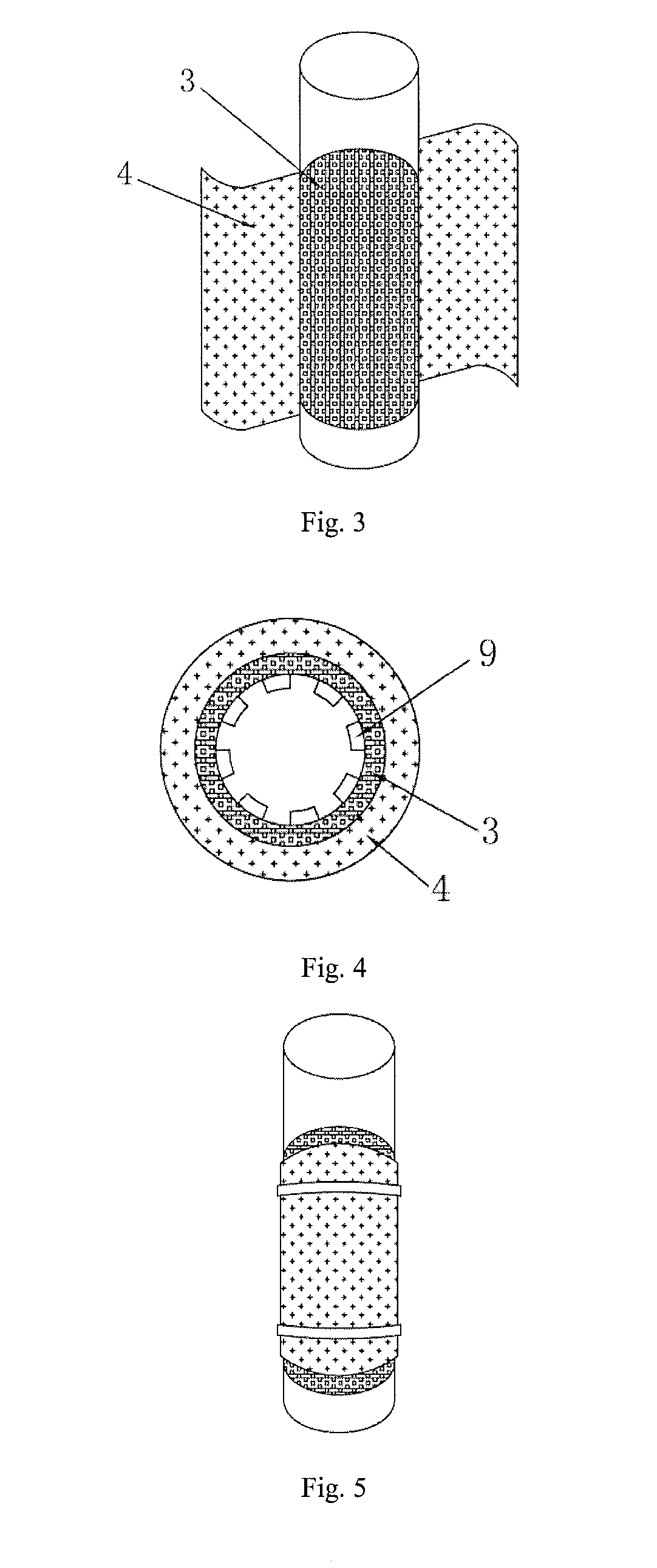Methods and devices for in-situ treatment of sediment simultaneous with microbial electricity generation
a technology of microbial electricity generation and in-situ treatment of sediment, which is applied in the direction of electrochemical generators, sustainable manufacturing/processing, and final product manufacturing, etc., can solve the problems of secondary pollution, high cost of methods, and sediment deposition in water bodies
- Summary
- Abstract
- Description
- Claims
- Application Information
AI Technical Summary
Benefits of technology
Problems solved by technology
Method used
Image
Examples
example 1
[0041]A method for in-situ treatment of sediment simultaneous with microbial electricity generation by using a tubular microbial fuel cell is provided in this example. The method comprises steps of:
[0042](1) providing an insulated cell frame with a perforated section, an inner space of the cell frame being served as the cathode chamber with air filled therein, the perforated section being wrapped by the cathode which is exposed to the air in the cathode chamber through perforations on the perforated sections, an outer surface of the cathode being wrapped by the one side of the anode, to form the microbial fuel cell; and
[0043](2) placing the microbial fuel cell in the sediment with the cathode chamber filled with air, then connecting the conductors to form a cell circuit, so that microorganisms are cultivated to generate electricity.
[0044]Specifically, with reference to FIGS. 2 to 5, wherein the FIG. 2 is a schematic view showing a perforated cell frame is wrapped by a membrane catho...
example 2
[0051]Two or more of the microbial fuel cell, each substantively the same as that in Example 1 but with both ends of the frame open, are vertically (or perpendicularly) disposed on a same connection tube that has two closed ends, to form a cell stack. This cell stack is suitable for use in a long narrow water body. The connection tube may also be made from insulated materials.
example 3
[0052]An alternative microbial fuel cell stack is provided by this example, as shown in FIGS. 8 and 9, where FIG. 8 shows an exemplary cell stack frame of a tubular microbial fuel cell stack and FIG. 9 shows an exemplary tubular microbial fuel cell stack in assembled state.
[0053]The microbial fuel cell stack is formed by a plurality of monomer cells and connecting tubes with each of the cathode chambers communication with each other. The monomer cell is the same as that in Example 1, as shown in FIGS. 2 to 5.
[0054]The plurality of the microbial fuel cells (MFCs) is vertically disposed on a plurality of cross connected connecting tubes. The plurality of the connecting tubes is interconnected to form a closed loop. Each of the cells is vertically placed in the sediment to be treated with the top end of the cell located above the water to ensure the cathode chamber is filled with air. The air is able to communicate between each of the cathode chambers of the cells, so that an efficient...
PUM
| Property | Measurement | Unit |
|---|---|---|
| open circuit voltage | aaaaa | aaaaa |
| diameter | aaaaa | aaaaa |
| length | aaaaa | aaaaa |
Abstract
Description
Claims
Application Information
 Login to View More
Login to View More - R&D
- Intellectual Property
- Life Sciences
- Materials
- Tech Scout
- Unparalleled Data Quality
- Higher Quality Content
- 60% Fewer Hallucinations
Browse by: Latest US Patents, China's latest patents, Technical Efficacy Thesaurus, Application Domain, Technology Topic, Popular Technical Reports.
© 2025 PatSnap. All rights reserved.Legal|Privacy policy|Modern Slavery Act Transparency Statement|Sitemap|About US| Contact US: help@patsnap.com



